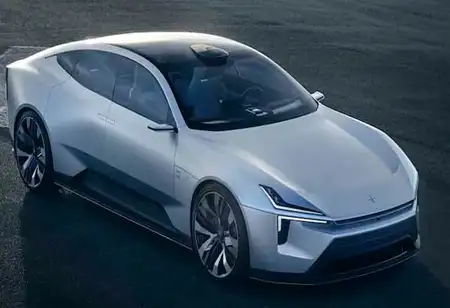THANK YOU FOR SUBSCRIBING
THANK YOU FOR SUBSCRIBING
Be first to read the latest tech news, Industry Leader's Insights, and CIO interviews of medium and large enterprises exclusively from Auto Tech Outlook

By
Auto Tech Outlook | Thursday, October 14, 2021
Stay ahead of the industry with exclusive feature stories on the top companies, expert insights and the latest news delivered straight to your inbox. Subscribe today.
At the end of manufacturing, the car's engine, transmission, axles, exhaust systems are installed, along with tires, allowing it to stand independently
FREMONT, C: A car typically takes two to five years to build from start to finish, from design to introduction. This lengthy timeline is necessary to verify that the car is safe for public use and generate unique designs that will pique the interest of a broad market. With technology advances and demand shifts, design and material usage have become more elaborate and complex.
Each car manufacturer has its unique method; below are a few guidelines for building a car, from obtaining raw materials to showing it on the showroom floor.
Step-by-Step Process of Manufacturing a Car
Raw Materials
Raw materials must be gathered to turn the car from a concept to reality. Several car manufacturers are looking for more sustainable, lightweight, and cost-effective materials for their vehicles to keep up with the demand for greener products.
Engineering and Design
Automobile design must cater to the demands and wishes of the general audience. After the design is drafted, it will be subjected to numerous adjustments to improve it. The inside and appearance must be designed to appeal to potential purchasers while also including cutting-edge innovations that make the vehicle newsworthy and competitive with other manufacturers.
Small models in 2D and 3D will be created to evaluate the car's design. Aerodynamics, safety, hot and cold weather, fuel economy,cost analysis,electrical functionality,and other factors will be examined by engineers. The production process can begin once the design and engineering specifications have been accepted.
Manufacturing
Robots manufacture and stamp the sheet metal parts for the bodywork. These components are used to create side frames, hoods,doors, and roofs, which are then attached to the car's primary frame. The car will be loaded onto a production line once the frame has been built and the components are ready to be assembled. The car will travel along a factory's moving assembly line, where robots and humans will work on it. Workers at the manufacturing factory will attach pieces to the car and, in certain cases, work alongside robots. Robotic work cells will weld, screw, solder,and glue pieces to the car independently.
The car will be detailed after the body parts have been manufactured onto it. Cleaning, applying chemical formulae for corrosion and scratch protection, and painting are all part of this process. Finally, the car's engine,transmission,axles, exhaust systems are installed, along with tires, allowing it to stand independently.
Quality Assurance (QA)and Testing
The car will be checked for QA and safety now that it is ready to drive, including:
If no more design or manufacturing changes are required for safety, the car can be introduced to the market.
Launch
After conducting market research, devising a marketing concept, and determining the car's price, the automobile will be manufactured and sold to the general public via car dealerships and private.
 Copyright © 2025 AutoTech Outlook. All Rights Reserved | Privacy Policy | Subscribe | Sitemap | About us | Feedback Policy | Editorial Policy
Copyright © 2025 AutoTech Outlook. All Rights Reserved | Privacy Policy | Subscribe | Sitemap | About us | Feedback Policy | Editorial Policy 
However, if you would like to share the information in this article, you may use the link below:
https://www.autotechoutlookapac.com/news/what-goes-into-manufacturing-a-car--nwid-883.html




